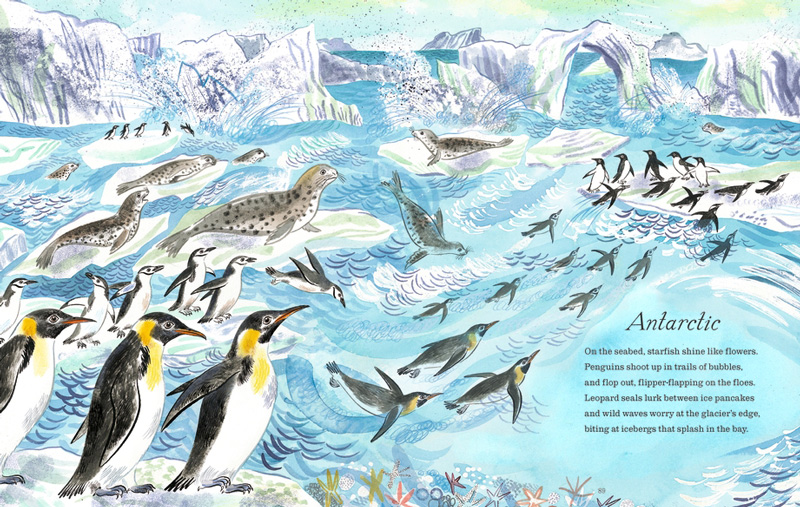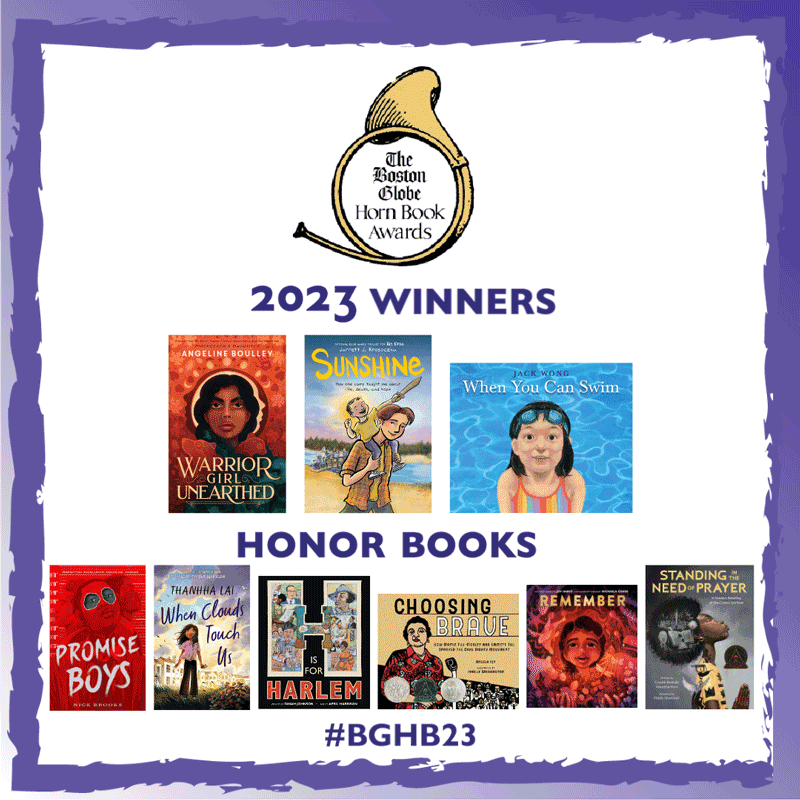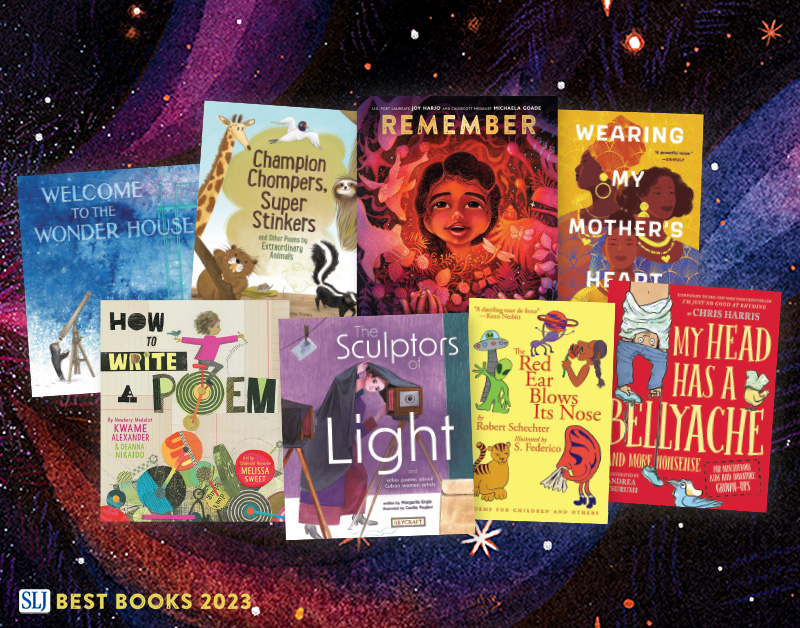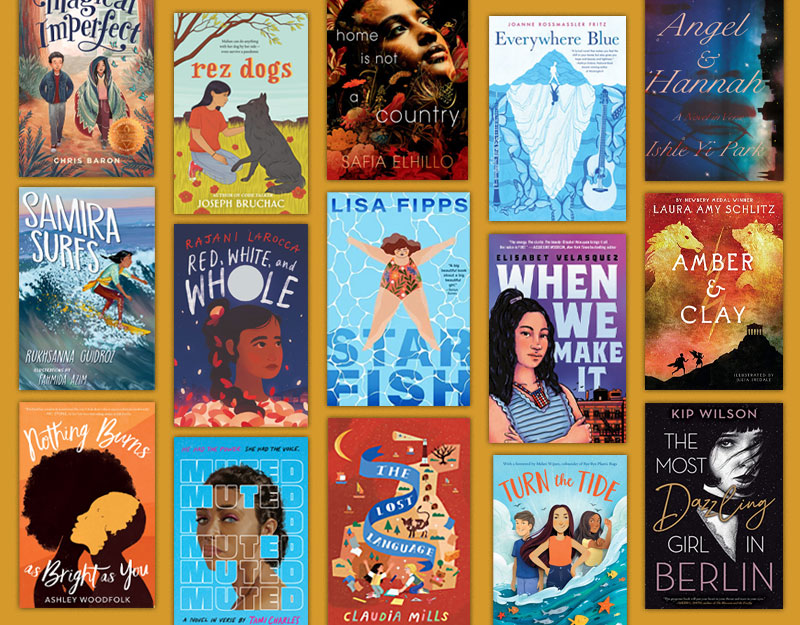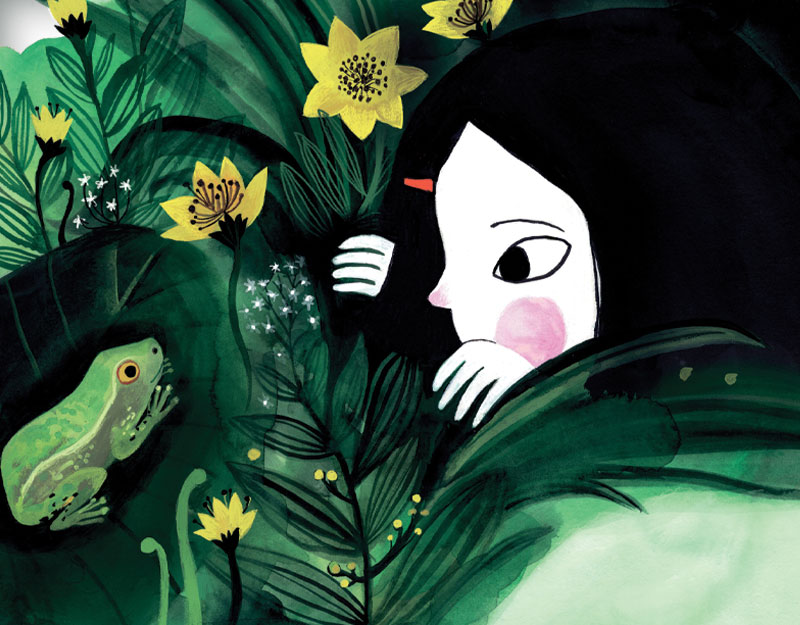The Way to Bea
Written by Kat Yeh
Published by Little, Brown 2017
ISBN: 978-0-316-23667-6
Grades 5-8
Book Review
“I mean, how do you keep someone and make sure they don’t leave? How do you figure out how to be and how to act, so they don’t even want to begin to think about leaving?” Beatrice “Bea” Lee and her best friend Sammie couldn’t wait to begin seventh grade, the year they were “dreaming of forever.” But as soon as Bea returns from her summer visit with family in Taiwan, nothing goes right. Sammie has new friends and won’t even talk to her. Bea’s artist parents are wrapped up in their work, one another, and the new baby on the way. When Bea isn’t fleeing school to hide out in the wooded path near her house, she is seeking lunchtime refuge in the offices of the Broadside, the school paper, for which she is the first seventh-grader to serve as poetry editor. There, she befriends Will, a Caucasian eighth grader on the Autism spectrum who prefers striped shirts, tagless clothing, lists, and labyrinths; Jamie, an African-American music aficionado and comic artist; and Caucasian editor-in-chief Briggs, who restores antiques and can spontaneously recite Bea’s poetry aloud. Soon, Bea is exchanging secret haiku and letters written in invisible ink with a stranger, leaving them inside a hole in an old stone wall, sneaking into New York City on her own, and researching how break into the Leland Labyrinth, the third-largest labyrinth in the United States. Along the way, Bea realizes: “I’m the only one who gets to walk my path and I’m the only one who gets to choose which way to go, and this is the only way I know how to be – and I can’t leave someone feeling like they’re in a dead end without letting them know that there might be a way through.” Yeh’s writing is like Bea’s haiku – spare, clean, and multi-layered. Paths, walls, labyrinths, and invisible ink lead both Bea and the reader towards deeper understandings of friendships, family dynamics, artistic identity, and finding one’s voice.
Teaching Ideas and Invitations
Personal Narratives: Mortifying Moments and Audacious Adventures. Early in the novel, we learn of Bea’s dazzling and colorful arrival at her friend Sammie’s annual end-of-summer pool party. Bea lives with the intense mortification of that moment and suffers through the loss of her best friend. At the end of the novel, Bea is on a daring adventure, after dark, leading her friends out of a labyrinth they have snuck into on private property. What mortifying moments have your students experienced? What audacious adventures have they found themselves on? Have your students brainstorm both topics, and then select one moment to write about. Have students share their stories in small groups. Host a reading during class or one evening, and invite family members. Of course, if students’ mortifying moments are too mortifying to be read aloud, students’ privacy should be respected, and their courage in sharing their stories celebrated.
ADVERTISEMENT
ADVERTISEMENT
The Myth of Theseus and the Minotaur. Once you have completed The Way to Bea, have students read the Ancient Greek myth of Theseus and the Minotaur. Given the fact that Bea’s father is a graphic novelist, you might want to read Yvan Pommaux’s graphic version of the story from Toon Graphics or Sarah Turnball’s version in Greek Myths. What are the parallels that they can draw between the myth and the novel? What are some of the ways that Yeh may have very intentionally used the myth to shape her story? Have students create story maps comparing and contrasting the similarities and differences between the two.
What Happens Next? Paired Novel and Graphic Novel Reading. Readers are left with an appropriately open-ended conclusion to the novel. Will Sammie join Bea, Will, Briggs, and Jaime on their walks to school? Can Sammie and Bea ever fully repair their friendship? What do your students think happens next? Have each student write the next chapter of the book, drawing upon their interpretation of Yeh’s last chapter. Students can draft their summaries of the chapter, but then make them come alive in a graphic novel short, using the art form of Bea’s father, the famous graphic novelist Steve Lee. Many of your students are most likely big fans of graphic fiction and nonfiction as well as comic books. Provide students with some background information on the comic arts, using resources listed below. Immerse students in graphic fiction and nonfiction by borrowing books for them to peruse from your school or local library. Have each student read at least one graphic book while they are reading The Way to Bea. To find high quality graphic books, use ALA’s new Graphic Novel Reading List for Grades 6-8 as well as YALSA’s Great Graphic Novels for Teens 2017. Students can evaluate the strengths and weaknesses of their graphic novel using evaluation criteria. After students write and illustrate their graphic novel chapters, have them read one another’s and evaluate them using the same evaluation criteria they used on the professional books.
Walls. There are a lot of walls in The Way to Bea: the walls of Henry Leland’s labyrinth; the broken wall around his estate; the crumbling wall which contains the “portal” for Bea’s letters and poems on the path to school; the walls of Bea’s parents’ studio; the wall whose gate Bea bursts before making her jump into Sammie’s pool; the walls of Bea’s room that she covers in color and poetry; and the walls of the Broadside office that make it “the Zen center of school.” Have students consider the roles that the different walls play in Bea’s life. When a wall factors into the plot, have them insert sticky notes to hold their thinking about why the wall might be important. After the book is completed, have students in small groups consider more deeply how the different walls in the story might “fit together.” What kind of message about walls might the author by sending, intentionally or otherwise? How do the walls serve as a metaphor? Students should compare and contrast their thinking about walls in the book with other pieces of art focused on walls. For example, together, you could explore Robert Frost’s canonical poem, “Mending Wall” and read quotes about walls curated at GoodReads. Students can share their ideas about walls by filling different walls in your school with their art and their words, just as Bea fills her bedroom walls with words and pictures from her mind. You might use the wall outside your classroom, the outside of their lockers, or the walls within the stairwells. This is a great project work on with your school librarian and art teacher.
Haiku. Bea loves the art of haiku, a form of Japanese poetry that requires spare language, a tight syllable and line break structure of 5-7-5, and a focus on the natural world. If you need more information on the history of haiku as an art form, you can read more at the Poetry Foundation and find haiku to share with your students. You can learn more about how the form has changed over time from the Academy of American Poets. You may also want to bring in the picture books, Hi, Koo!: A Year of Seasons by John Muth, Guyko: A Year of Haiku for Boys by Bob Raczka, Guess Who, Haiku by by Deanna Caswell, and Brains for Lunch: A Zombie Novel in Haiku by K.A. Holt. Guess Who, Haiku has wonderful back matter that also explains the history and origin of haiku. How does haiku make them feel? What is appealing about the art form? Have students play with the art form, and as they read The Way to Bea, try to respond to the text through the writing of haiku. They can also write haiku about their own lives, and the trials, tribulations, and joys of being in middle school. You may even want to create a secret buddy system, and have the students exchange haikus with one another, written in invisible ink.
ADVERTISEMENT
ADVERTISEMENT
The History of Labyrinths. Towards the end of the novel, readers learn more from Will about the history of labyrinths and the difference in connotation between an ancient labyrinth and a modern one. Divide your students up into pairs and have them explore labyrinth typology, asking each to present information to the class about one type of labyrinth and the time period and place in which it emerged. Be sure to have students activate their visual literacy as well as their understanding of text as they read about and then convey this new information to their classmates.
Experiencing a Labyrinth or Maze. Using the World-Wide Labyrinth Locator from the Labyrinth Society, plug in the zip code(s) for your community and see if there are any labyrinths you can walk as a group. If you live in an area that grows corn, you may also have a local corn maze this time of year. Bring your class to the labyrinth, maze, or both. How is the labyrinth different from the maze? How do they feel after each experience, and why? If you can’t go to local labyrinth, you can have your students try the virtual labyrinth walk or you can work together with your class or classes to design and build temporary labyrinths on your school property. After the labyrinth experience, have your students do some reflective writing on labyrinths. Why are they worthy of Will’s obsession? Why have they have been popular since antiquity?
Playlists. Throughout the novel, Bea refers to the playlist she made for Sammie, “I Hope You Listen.” Place students in pairs, allowing each pair to choose one song from the playlist (listed in the back of the book) to listen to and analyze. Why do they think Bea selected that song? What message might she have been trying to send to Sammie? To herself? Have each pair make a presentation to the rest of the class, in which they play the song, present their analysis of it, and then lead a discussion with their classmates. As a follow-up assignment, students might want to create their own original playlists. These playlists might be for themselves, or they might be curated for a friend or family member. Have the students write reflections on why each song was included in the playlist. As a way to foster ongoing community-building in your classroom and across your team, you might want to set aside time during homeroom period or at the beginning and end of class for each student to play one song from his/her playlist for the class.
Being 12. Allow students to self-select one of the following novels, which feature seventh grade protagonists, to read in literature circles/book clubs: The Way to Bea, The Crossover by Kwame Alexander, Goodbye Stranger by Rebecca Stead, The Wednesday Wars by Gary Schmidt, and The Seventh Wish by Kate Messner. As a whole class, read Gary Soto’s classic short story, “Seventh Grade.” What tensions do students see in the story? How does the protagonist interact with others? How do others respond to him? Use this story as a catalyst for considering the challenges of friendship, school culture, and romantic relationships that seventh graders face. Next, have students begin their small group work. Periodically, bring students together in jigsaw-ed groups to compare and contrast their novels. Finally, have them explore the audio podcasts from WNYC’s series Being 12, which focuses on the real lives of twelve year-olds in New York City in 2015. Let students write their own fiction, nonfiction, or poetry about being (by and large, approximately) twelve years old. This might be an ideal opportunity for students to conduct “Story Corps”-like interviews of one another and put together a podcast. Or, students could create photo essays of their lives, including selfie portraits, and ruminate on being 12 through accompanying poetry and prose. Note: This teaching idea originated in our 2015 entry on Goodbye Stranger.
Further Explorations
Online Resources
International Comic Arts Forum
ALA Great Graphic Novels for Grades 6-8
YALSA’s Great Graphic Novels for Teens 2017
Haiku, The Academy of American Poets
Books
Alexander, K. (2014). The Crossover. Houghton Mifflin Harcourt.
Caswell, D. (2016). Guess Who, Haiku? Ill. by B. Shea. Abrams Publishing.
Holt, K.A. (2010). Brains for Lunch: A Zombie Novel in Haiku. Roaring Brook Press.
Messner, K. (2016). The Seventh Wish. Bloomsbury.
Muth, J. (2014). Hi, Koo!: A Year of Seasons. Scholastic Press.
Pommaux, Y. (2014). Theseus and the Minotaur. Trans. by R. Kutner. Candlewick/Toon Graphics.
Raczka, B. (2010). Guyku: A Year of Haiku for Boys. Houghton Mifflin Harcourt.
Schmidt, G. (2007). The Wednesday Wars. Houghton Mifflin Harcourt.
Soto, G. (1990). Baseball in April and Other Stories. Harcourt.
Turnball, S. (2010). Greek Myths. Ill. by S. Young. Candlewick Press.
About Mary Ann Cappiello
Mary Ann is a professor of language and literacy at Lesley University. A former public school language arts and humanities teacher, she is a passionate advocate for and commentator on children’s books. Mary Ann is the co-author of Teaching with Text Sets (2013) and Teaching to Complexity (2015) and Text Sets in Action: Pathways Through Content Area Literacy (Stenhouse, 2021). She has been a guest on public radio and a consultant to public television. From 2015-2018, Mary Ann was a member of the National Council of Teachers of English's Orbis Pictus Award for Outstanding Nonfiction (K-8) Committee, serving two years as chair.
ADVERTISEMENT
ADVERTISEMENT
SLJ Blog Network
2024 Books from Pura Belpré Winners
Passover Postings! Chris Baron, Joshua S. Levy, and Naomi Milliner Discuss On All Other Nights
Winnie-The-Pooh | Review
Parsing Religion in Public Schools
ADVERTISEMENT




